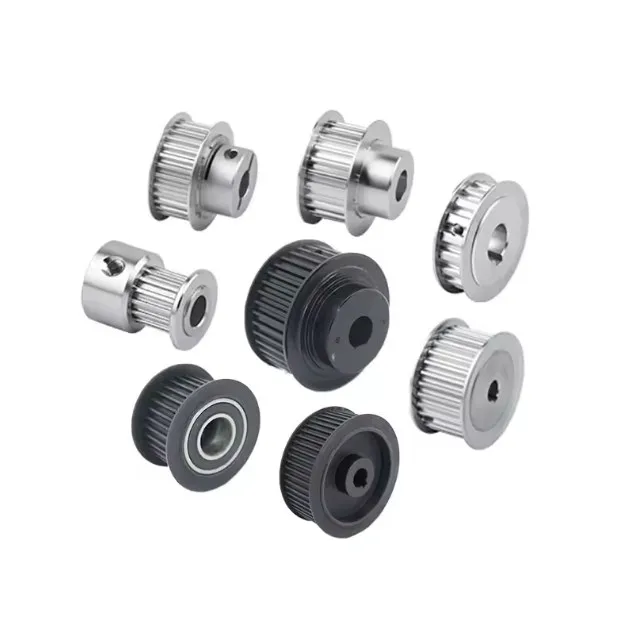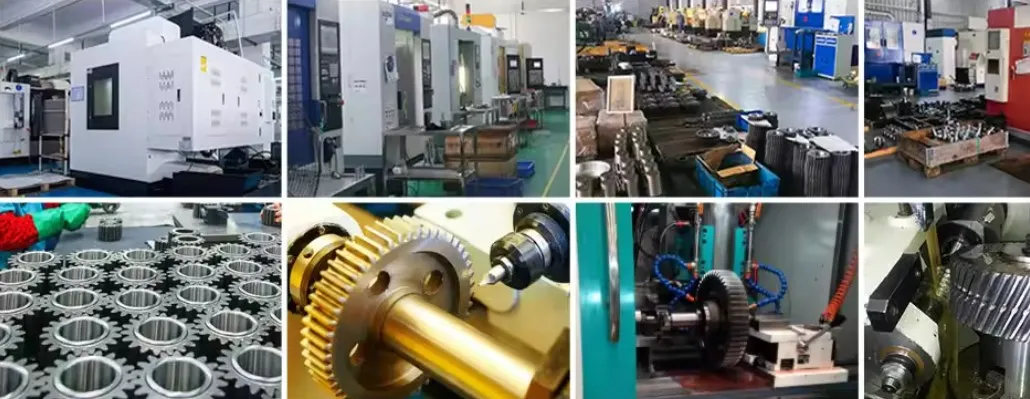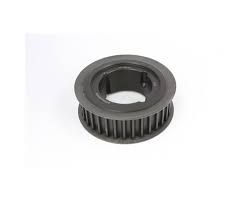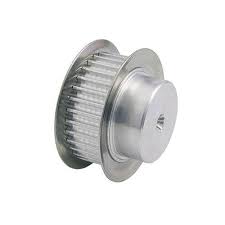“`html
Timing Pulley 5M
Introduction to Timing Pulley 5M
The 5M timing pulley is an essential component in synchronous drive systems, providing precise timing and efficient power transmission. These pulleys are widely used in various industrial and automotive applications due to their reliability and performance.
Understanding Synchronous Drive Systems
Synchronous drive systems utilize timing pulleys and belts to ensure that the rotational speed and position of the shafts are accurately synchronized. This is critical in applications where timing and precision are paramount.
Applications of Timing Pulley 5M
Timing pulleys 5M are used in diverse applications, including conveyor systems, robotics, CNC machines, and automotive engines. Their ability to maintain precise timing makes them indispensable in such critical environments.
Advantages of Timing Pulley 5M
The 5M timing pulley offers several advantages such as reduced vibration, lower noise levels, and higher load capacity. These characteristics contribute to its widespread adoption in various industries.
Materials Used in Timing Pulley 5M
The construction materials for 5M timing pulleys typically include aluminum, steel, and engineering plastics. Each material offers distinct benefits, including strength, durability, and resistance to wear.
Design and Engineering of 5M Pulleys
The design of 5M timing pulleys involves meticulous engineering to ensure optimal performance. Factors such as tooth profile, pitch, and material selection are critical in achieving efficient power transmission.
Maintenance and Longevity
Proper maintenance of 5M timing pulleys can significantly extend their life. Regular inspection and lubrication help in preventing wear and tear, ensuring consistent performance.
How to Install Timing Pulley 5M
Installing a 5M timing pulley requires precision. Ensure that the pulley is aligned correctly with the belt and securely fastened to the shaft. Misalignment can lead to premature wear and failure.
What is an HTD Pulley?
HTD (High Torque Drive) pulleys are designed to handle higher torque loads than standard pulleys. These are most commonly used in applications that require precise motion control.
High Torque Capacity
HTD pulleys are engineered to transmit higher levels of torque, making them ideal for demanding applications. They can withstand significant stress without deforming or failing.
Distinct Tooth Profile
HTD pulleys feature a unique tooth profile that enhances grip and reduces slippage. This design ensures efficient power transmission and minimizes wear on the belt.
Durability and Reliability
Constructed from high-quality materials such as anodized aluminum or steel, HTD pulleys offer excellent durability and reliability, even in harsh operating conditions.
Wide Range of Applications
HTD pulleys are used in various industries, including automotive, aerospace, and manufacturing. Their ability to handle high torque and maintain precise timing makes them versatile components.
Easy Integration
HTD pulleys can be easily integrated into existing synchronous drive systems. Their compatibility with a wide range of belts and shafts makes them a popular choice.

What is the Minimum Pulley Size for HTD 5M?
Determining the minimum pulley size for HTD 5M is crucial for ensuring optimal performance and longevity of the drive system.
Diameter Considerations
The minimum diameter of the HTD 5M pulley should be large enough to maintain the belt’s flexibility and prevent excessive bending stress. Typically, a diameter of 25mm is recommended.
Load Capacity
Smaller pulleys can handle lower torque loads. Ensuring that the selected pulley size can accommodate the application’s load requirements is essential to prevent system failure.
Belt Compatibility
Ensure that the pulley size is compatible with the HTD 5M belt specifications. Mismatched sizes can lead to premature wear and reduced efficiency.
Speed and Efficiency
Choosing the correct pulley size affects the speed and efficiency of the drive system. Smaller pulleys may increase rotational speed but can also increase wear.
Space Constraints
Consider the available space in the application when selecting the pulley size. Ensure that the pulley fits within the system’s spatial limitations without causing interference.

What is the Difference Between GT and HTD Belts?
GT (Gates Tooth) and HTD belts have different tooth profiles and design characteristics, affecting their performance and applications.
Tooth Profile
HTD belts feature a curvilinear tooth profile, while GT belts have a modified curvilinear design. This difference impacts their load-carrying capacity and precision.
Load Capacity
GT belts generally offer higher load capacity compared to HTD belts. This makes GT belts suitable for more demanding applications requiring higher torque transmission.
Precision and Timing
GT belts provide better precision and timing accuracy due to their refined tooth profile. They are preferred in applications where precise motion control is critical.
Noise Levels
HTD belts tend to produce more noise compared to GT belts. The smoother profile of GT belts helps in reducing operational noise, making them ideal for quieter applications.
Application Versatility
While both HTD and GT belts are versatile, GT belts are often chosen for more specialized and high-performance applications, whereas HTD belts are used in a broader range of standard applications.
How to Choose or Customize the Right HTD Pulley
Selecting the appropriate HTD pulley involves considering various parameters and real-world conditions to ensure optimal performance.
Load Requirements
Determine the load requirements of your application. This includes the torque and power that the pulley needs to handle. Ensure that the selected pulley can accommodate these loads without failure.
Material Selection
Choose the material based on the operating environment. For instance, aluminum is lightweight and corrosion-resistant, while steel provides superior strength and durability.
Tooth Profile and Pitch
Select the appropriate tooth profile and pitch that match the belt specifications. This ensures efficient power transmission and reduces wear.
Shaft Compatibility
Ensure that the pulley is compatible with the shaft’s size and configuration. Proper fitment is essential to prevent slippage and maintain alignment.
Environmental Conditions
Consider the operating environment’s temperature, humidity, and exposure to chemicals. Choose materials and coatings that can withstand these conditions to ensure longevity.

HZPT: Your Trusted HTD Pulley Manufacturer
HZPT specializes in designing, developing, and manufacturing high-performance timing pulleys, including HTD pulleys. Our products are trusted by clients in Europe, South America, and Australia, thanks to our commitment to quality and customer service.
Product Quality
We prioritize product quality, ensuring that each pulley meets stringent standards. Our pulleys are built to last, providing reliable performance in various applications.
Customer-Centric Service
Our “customer-first” policy ensures that we address all client needs promptly and efficiently. We strive to build long-term relationships with our clients by offering exceptional service.
Innovative Solutions
Our team of young, dynamic, and skilled professionals is dedicated to providing innovative solutions. We continuously improve our products and services to meet evolving market demands.
Fast Delivery
One of our key strengths is our ability to provide fast delivery. With a well-stocked warehouse and efficient distribution network, we ensure timely delivery of products to our customers.
OEM Services
We offer OEM services, allowing clients to customize products according to their specific requirements. Our professional factory in China is equipped to handle custom orders and develop new products.
For any inquiries or feedback, please feel free to contact us. We are committed to providing you with the best products at competitive prices and look forward to collaborating with you.
“`









